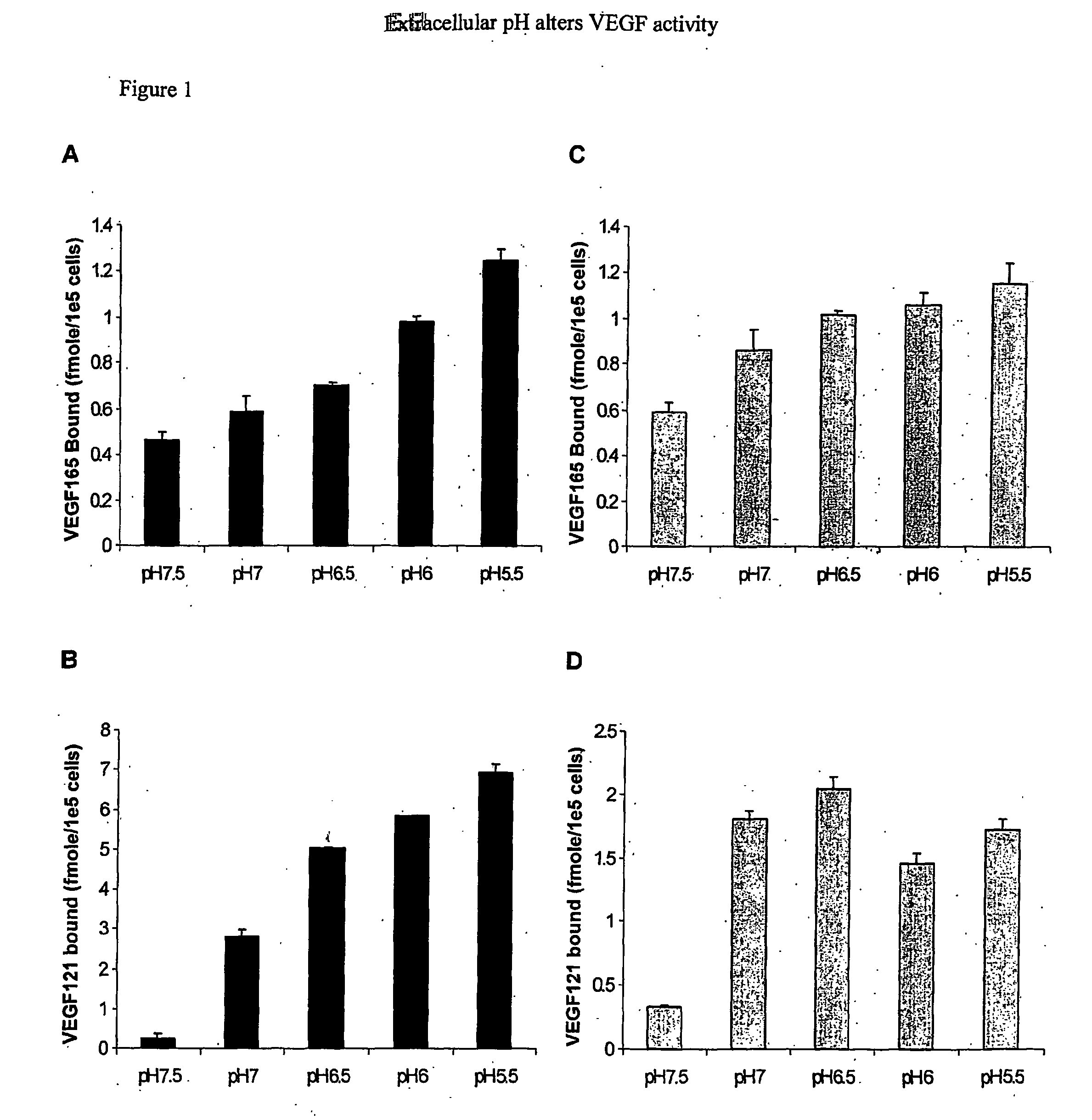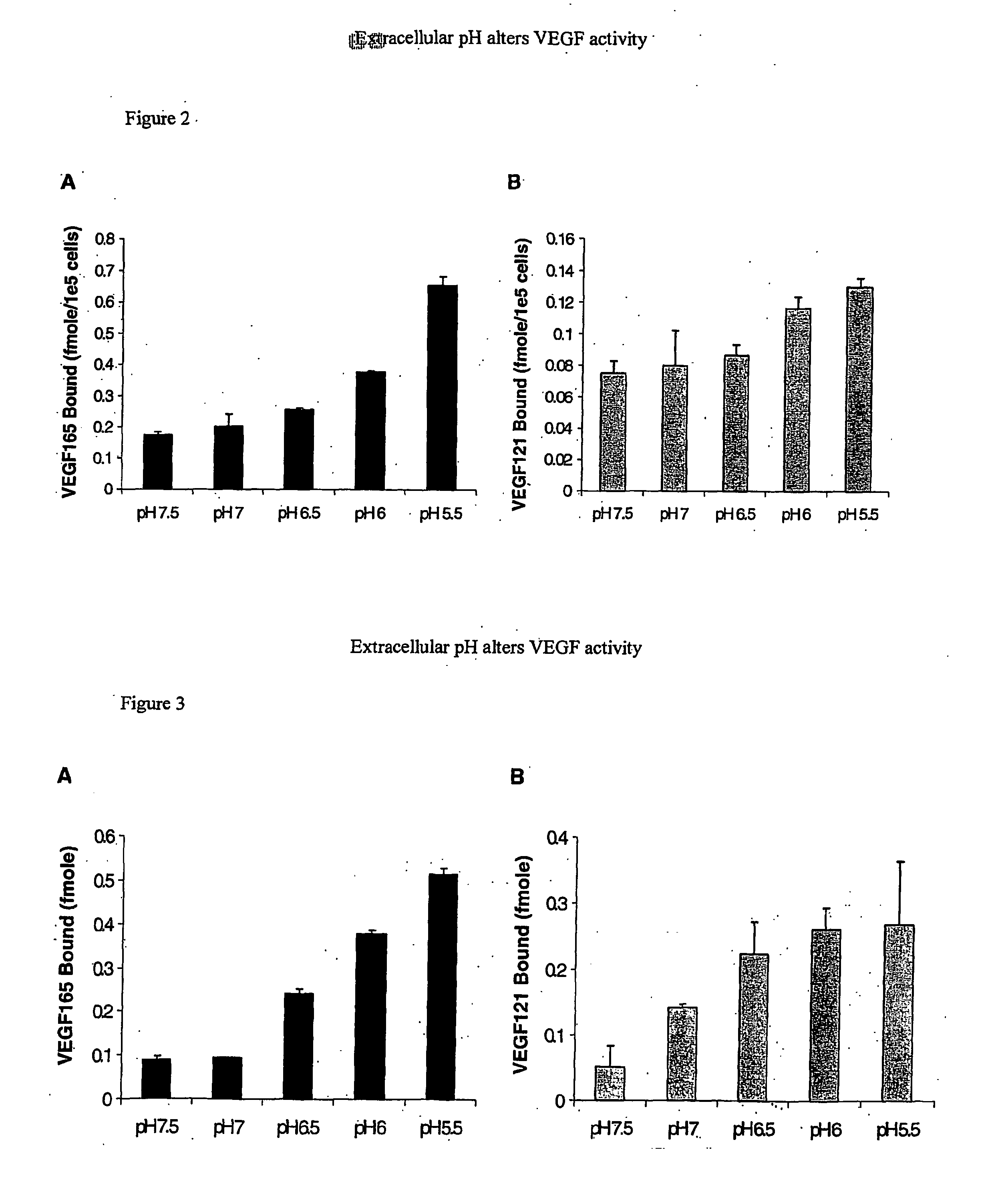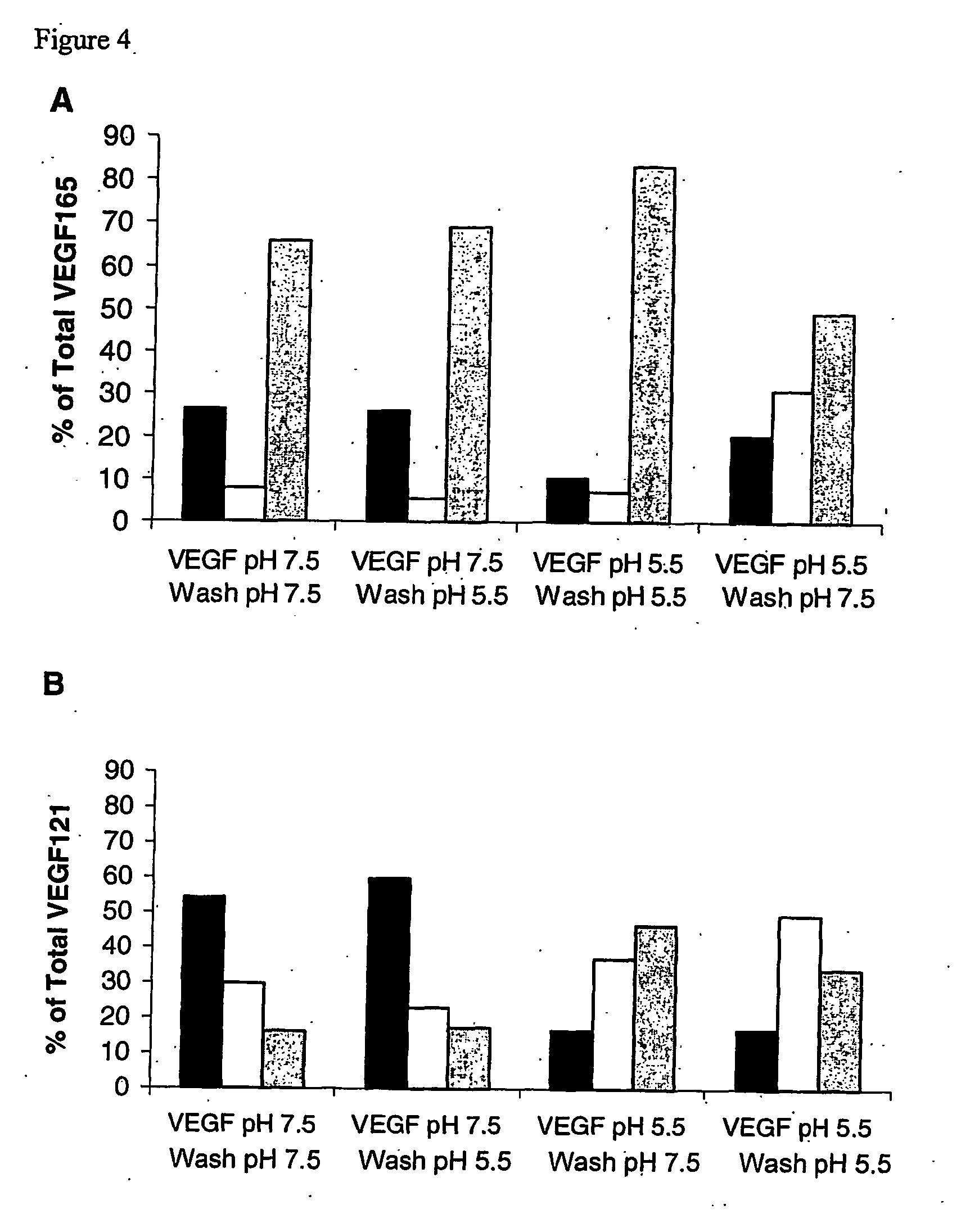Method for stimulating angiogenesis and wound healing
a technology of angiogenesis and wound healing, applied in the direction of angiogenin, prosthesis, peptide/protein ingredients, etc., can solve the problems of promiscuous induction of angiogenesis in tissues, short half-life of vegf protein, and significant challenge in the delivery of such angiogenic promoters such as vegf protein, so as to achieve efficient binding of a protein and promote angiogenesis
- Summary
- Abstract
- Description
- Claims
- Application Information
AI Technical Summary
Benefits of technology
Problems solved by technology
Method used
Image
Examples
example 1
Affect of Heparin and Heparin-Derived Compounds on Binding
Results
VEGF165 and VEGF121 Binding to Cell Surfaces are Altered by pH
[0095] At sites of angiogenesis, such as tumors and wounds, the environment is rather hypoxic. Hypoxia increases expression of VEGF thereby promoting increased rates of migration and proliferation of endothelial cells. Hypoxic environments also lead to decreases in extracellular pH. While the intracellular signaling events occurring under hypoxic conditions in response to VEGF have been of major focus, there has been little attention to how acidity affects VEGF outside of cells. Therefore, to investigate the role of extracellular pH on VEGF165 and VEGF121 interactions with cell surfaces, binding assays were conducted with confluent BAEC at various pHs ranging from pH 7.5-5.5 (FIG. 1). It was found that as pH decreased, VEGF165 and VEGF121 binding to BAEC increased dramatically. HSPG-mediated VEGF165 binding at pH 5.5 was ˜2.5 fold greater than that at p...
example 2
[0108] Factors in Addition to Heparin and Heparin-Derived Compounds Affecting Binding
Activation of Erk½ in BAEC
[0109] Erk12 / activation in BAEC was evaluated in response to VEGF that had been pre-bound to BAEC at pH 5.5. BAEC were plated at 20,000 cells per well in 6-well dishes. After 24 h, the medium was replaced with DMEM containing 0.5% CS for 24 h, to quiesce the cells. Cells were incubated with binding buffer at pH 5.5 for 10 min at 37° C. VEGF165 (0.6 nM) was added to the cells at pH 5.5 for 60 miin at 37° C. Unbound VEGF165 was removed. Cells were incubated for 10 min in buffer at pH 7.5, 7.0, 6.5, 6.0, or 5.5. Erk½ activation in BAEC was evaluated in response to VEGF that had been dissociated from fibronectin. Quiescent endothelial cells were generated as stated above. Binding buffer (1 mL) was added to cells at pH 7.5 or pH 5.5, for 90 min. VEGF165 (3.0 nM) and VEGF121 (3.5 nM) were allowed to bind to fibronectin-coated dishes in the presence of 1 μg / mL of heparin for 1...
example 3
Preparation of VEGF Encapsulated Spheres
[0122] A 1:1 heparin-Sepharose slurry (45 mg / ml, pH 7.5) was combined with fibronectin (0.30 mg / ml), VEGF165 / 121 (1.25 ug / ml), and binding buffer (10 mM HEPES, 1 mg / ml BSA, pH 5.5). The final pH of the mixture was determined to be 5.5. The mixture was incubated for 2 hours at 4° C. with rotation. After incubation, sodium alginate (1.8% w / v, pH 5.5) was added to the solution to produce a final alginate concentration of 1.2% w / v. The solution was gently mixed to ensure uniform distribution. The alginate mixture was then extruded though a 22 gauge needle into cold calcium chloride solution (1.5% w / v, pH 5.5). Calcium alginate spheres were immediately formed upon entering the hardening solution. The alginate spheres were allowed to further crosslink for 5 minutes with gentle mixing, followed by 15 minutes without mixing. The spheres were then washed three times with cold HEPES buffer (10 mM HEPES, pH 5.5). Each sphere had an average diameter of 3...
PUM
 Login to View More
Login to View More Abstract
Description
Claims
Application Information
 Login to View More
Login to View More - R&D
- Intellectual Property
- Life Sciences
- Materials
- Tech Scout
- Unparalleled Data Quality
- Higher Quality Content
- 60% Fewer Hallucinations
Browse by: Latest US Patents, China's latest patents, Technical Efficacy Thesaurus, Application Domain, Technology Topic, Popular Technical Reports.
© 2025 PatSnap. All rights reserved.Legal|Privacy policy|Modern Slavery Act Transparency Statement|Sitemap|About US| Contact US: help@patsnap.com



